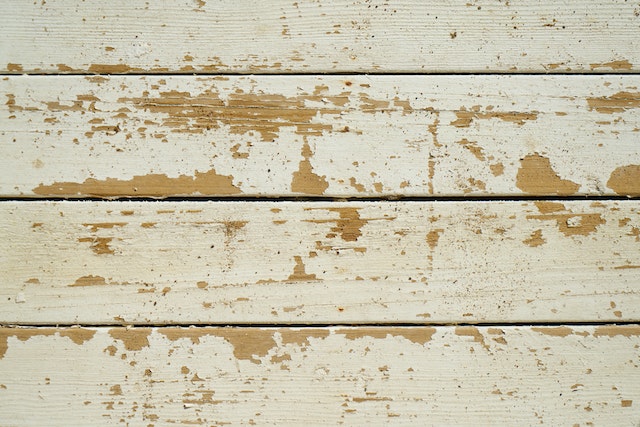Normal wear and tear refer to the gradual breakdown of a property or items due to everyday use. It is the deterioration that results from ordinary, everyday use of an object or property, including minor scratches, dents and fading.
As a landlord, it’s important to understand what is considered normal wear and tear. This helps you make sure your tenants are responsible for any excessive damage at the end of their lease.
In this article, we’ll discuss when damage to the unit is considered normal, how to assess damage and repair costs, and the best way to protect yourself from excessive disrepair. We’ll also cover tips for avoiding costly repairs that can be caused by tenant negligence.
With this information in hand, you can ensure fair treatment of your tenants while still protecting your investment.
What Is Considered Normal Wear and Tear?
Normal wear and tear occurs naturally when people occupy a home. Normal damage does not include damage caused by accidents, tenant negligence, or intentional destruction. For instance, if a tenant spills red wine on a carpet and the stain won’t come out, this is not considered normal wear and tear.
When assessing damage and repair costs, it’s important to distinguish between normal wear and tear and tenant negligence. Common damage should be taken into account when calculating any necessary repairs or deductions from a security deposit. If you determine that the damage is due to tenant negligence, then you can make a claim against their security deposit.

Examples of normal wear and tear include:
- Minor scratches, dents and fading caused by everyday use
- A worn area on the carpet where foot traffic is heaviest
- Stains or discoloration due to age or sunlight
- Loose or broken door locks and hinges
- A worn spot in the sink or bathtub
- Light surface rust on outdoor fixtures
What Is Considered Unexpected Damage?
Unexpected damage refers to any damage that is not caused by normal wear and tear such as:
- Accidental spills or stains
- Damage from intentional destruction or vandalism
- Failure to follow instructions for proper use of appliances
- Ignoring safety concerns
- Causes of mold or mildew
These things can be caused by tenants, pets, guests, and anyone else who steps into the rental property.
What Does Normal Damage Look Like?
Due to its gradual nature, it’s often difficult to tell the difference between regular wear and tear and other types of damage. However, there are ways through which you can determine normal wear and tear easily.
One way to determine if the damage to a property is normal or negligence is to consider the age of a property or item. The older something is, the more likely it will show signs of damage due to regular use. For example, carpeting in a rental home may start to look worn after several years, even if the tenant takes good care of it.

Another way to determine normal wear and tear is to compare an item’s condition before and after a tenant moves in. Making an itemized list of items and their condition before your tenant moves in is a helpful way to keep track of this. If the damage to the unit looks like it was caused by negligence or misuse, then you should consider charging the tenant for repairs.
How Should You Assess Damage and Repair Costs?
When assessing damage and repair costs, it’s important to remember that normal wear and tear can be expensive to repair. For example, carpeting may need to be replaced every few years due to fading and general wear. As a property owner, this needs to be something you budget for so it does not cause problems when the time comes.
It’s also important to consider the value of an item when assessing damage and repair costs. If an item is older and has a lower value, then repairs may not be worth the cost. On the other hand, if an item is newer or more valuable, it may be worth making repairs.
When in doubt, it’s best to consult a professional who can help you assess the damage and repair costs. This will help ensure that you are making an informed decision about how to proceed with repairs.
How Can You Protect Yourself From Excessive Damage?
The best way to protect yourself from excessive damage is to make sure that tenants are aware of your expectations. You should create a rental agreement that outlines the rules for care and maintenance of the property, as well as any associated fees or penalties for not following the rules.

It is also essential to conduct regular inspections to ensure that tenants are adhering to the terms of the agreement. If you notice any damage beyond what is considered normal wear and tear, then you should address it immediately with your tenant.
Finally, make sure to document any damage that occurs during a tenancy. This will help protect you if a tenant disputes the cost of repairs after they move out. If you have quality tenants, you can be sure to avoid any disputes about damage.
Takeaway
Normal wear and tear is an expected part of renting a property. As a landlord, it is essential to be aware of what is going on in your unit, and how much of the damage is considered normal.
Knowing how to recognize and assess damage that goes beyond normal wear and tear is the key to protecting yourself against costly repairs. By following the tips outlined above, you can ensure that your rental property remains in good condition for years to come.
If you need help managing your rental property, the experts at Blue Door Realty are here to help. Our experienced team can answer all your questions about normal wear and tear and damage to your unit.
